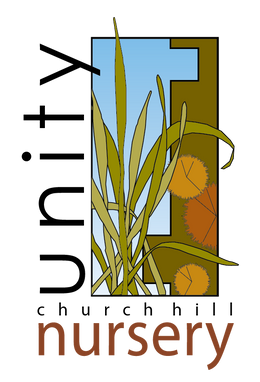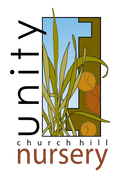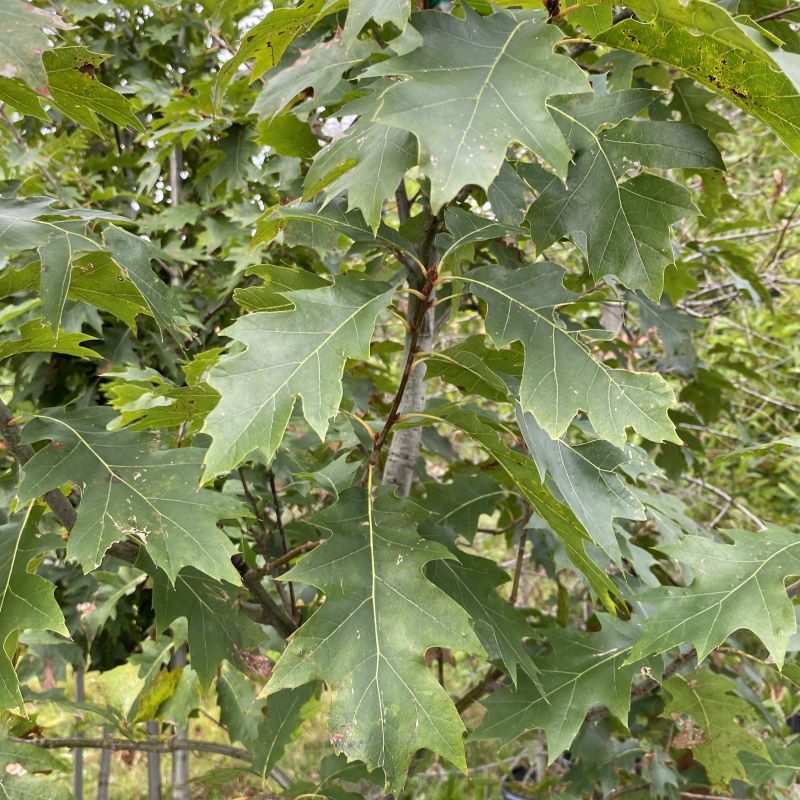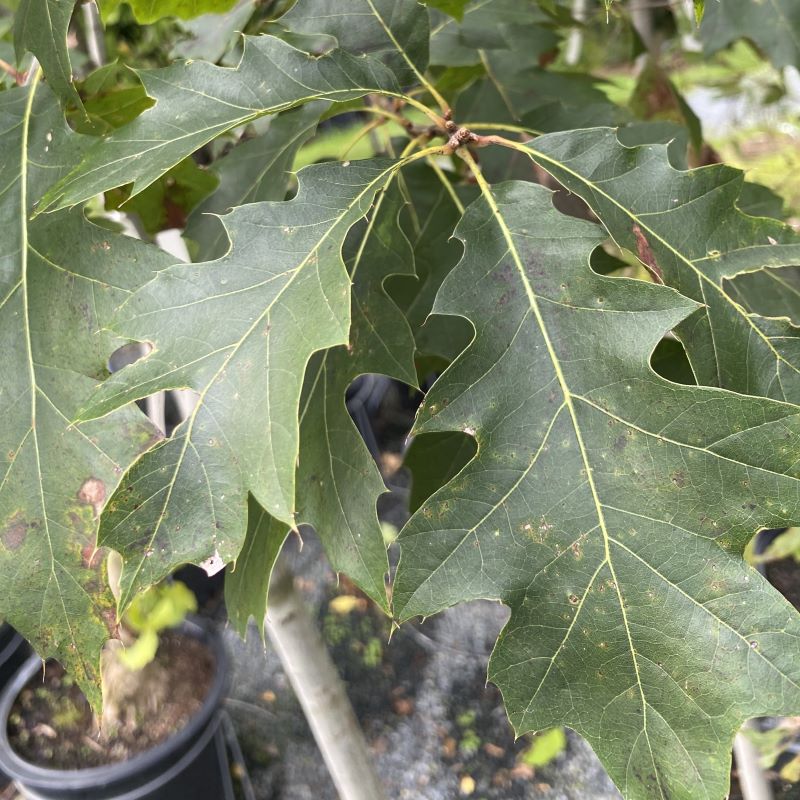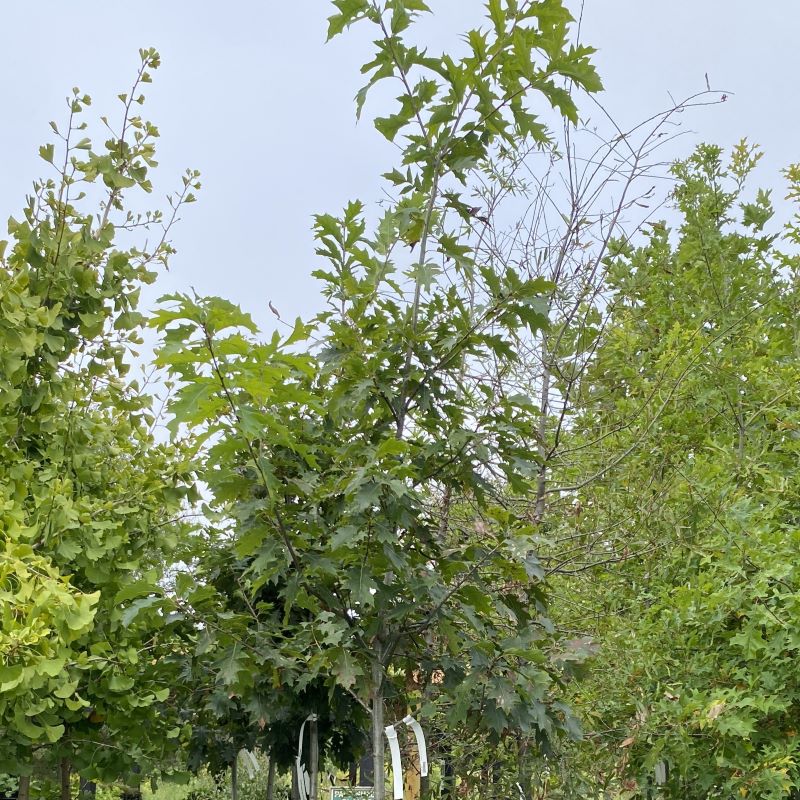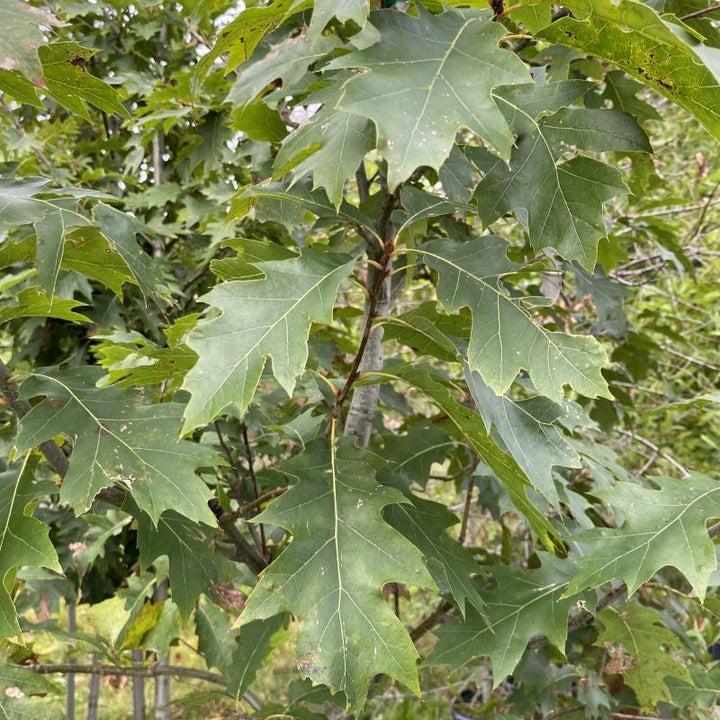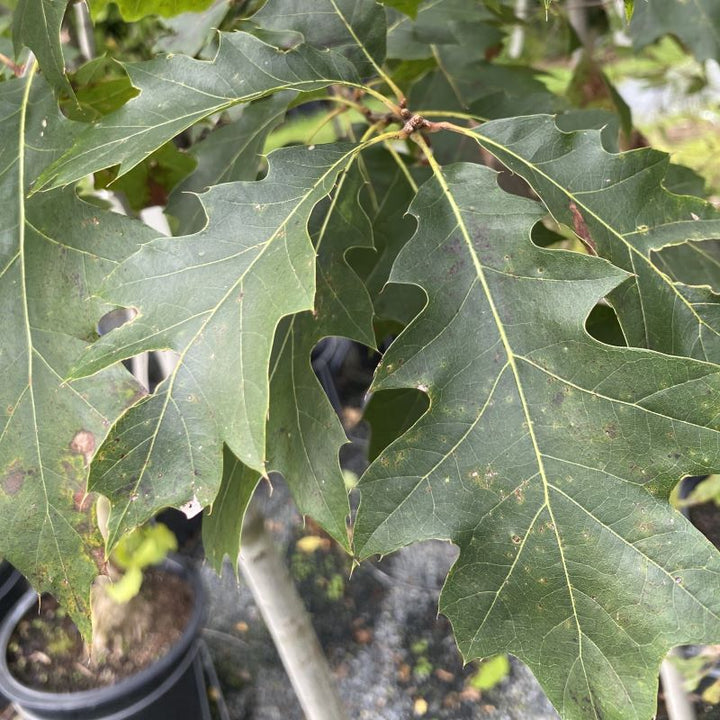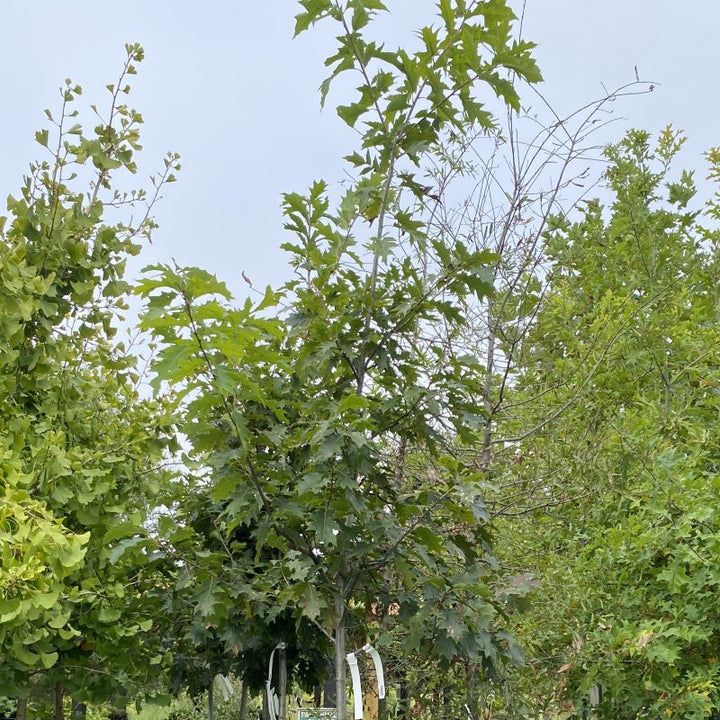Quercus rubra (Red Oak)
- Low stock - 2 items left
- Inventory on the way
Quercus rubra, red oak, is a large oak tree that is the namesake of the red oak group, a common grouping of oaks based on the color of their fall foliage. Quercus rubra grows to 50-75' tall in yard settings, but often to 100' or taller in the wild. Red oak is known for its glossy green wide-lobed leaves which turn to a bright, eye-catching red hue in the fall. As an oak, Quercus rubra also produces acorns, but first fruit doesn't typically appear for 20 to 25 years, and red oak only begins producing larger amounts of acorns when it reaches 40 to 50 years of age. Acorns are average in appearance, but caps may be more flat and saucer-shaped than other species.
Quercus rubra is typically planted for ornamental or ecological uses, but is a relatively hardy species once established, capable of withstanding drought, dry soil, and air pollution. Fall foliage makes it a great pick as a specimen tree, while overall shape and large habit makes it excellent as a summer shade tree. Acorns are ecologically valuable to a number of species including white-tailed deer, wild turkey, blue jays, and various species of squirrel, and waterfowl.
In addition to acorn value, many Quercus species are regarded as important keystone plants for their support of larval butterflies and moths, and Quercus rubra is no different; red oak is a host to the caterpillars of several species of duskywing moth and hairstreak butterfly, including the endangered hickory hairstreak (Satyrium caryaevorus).
